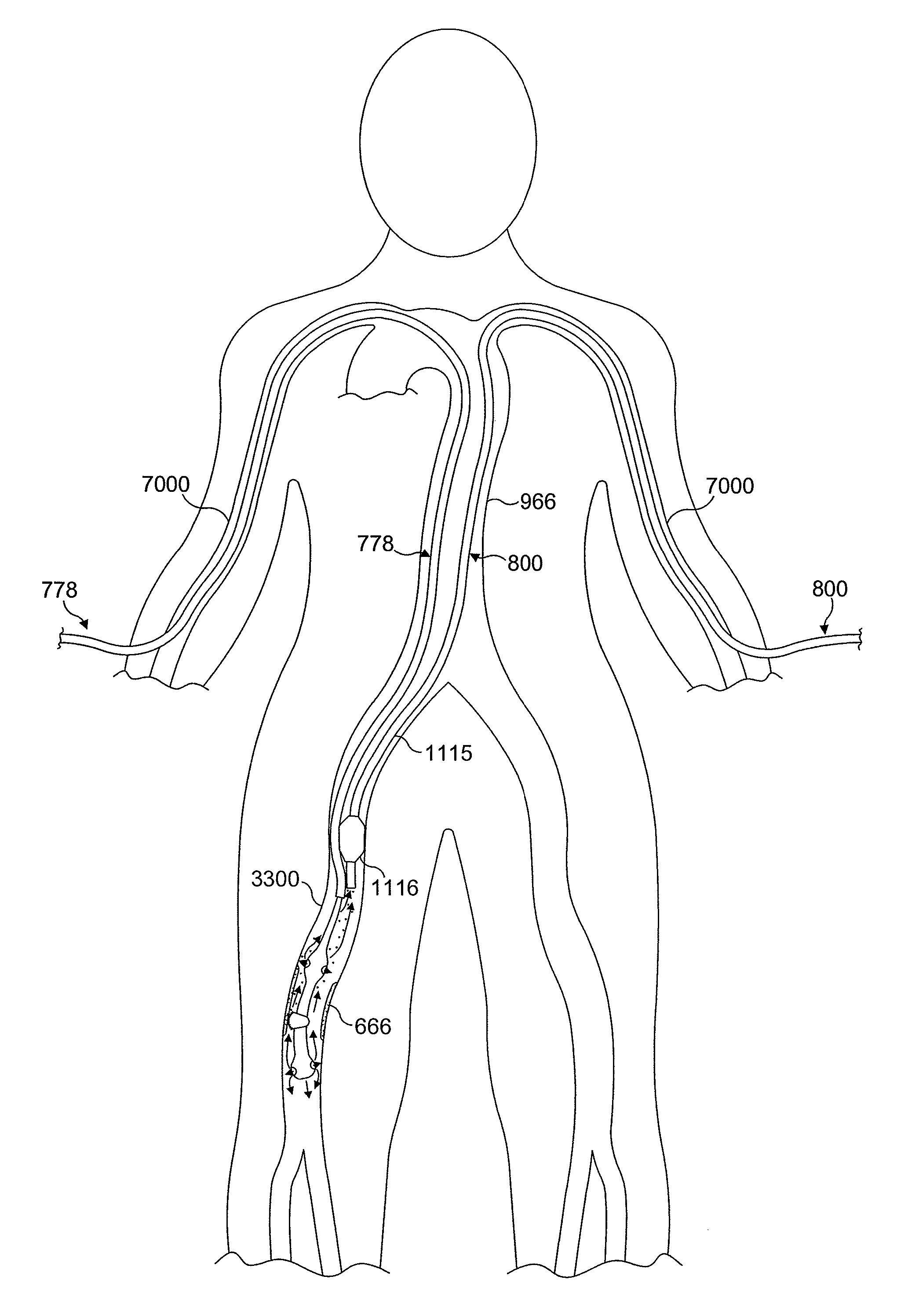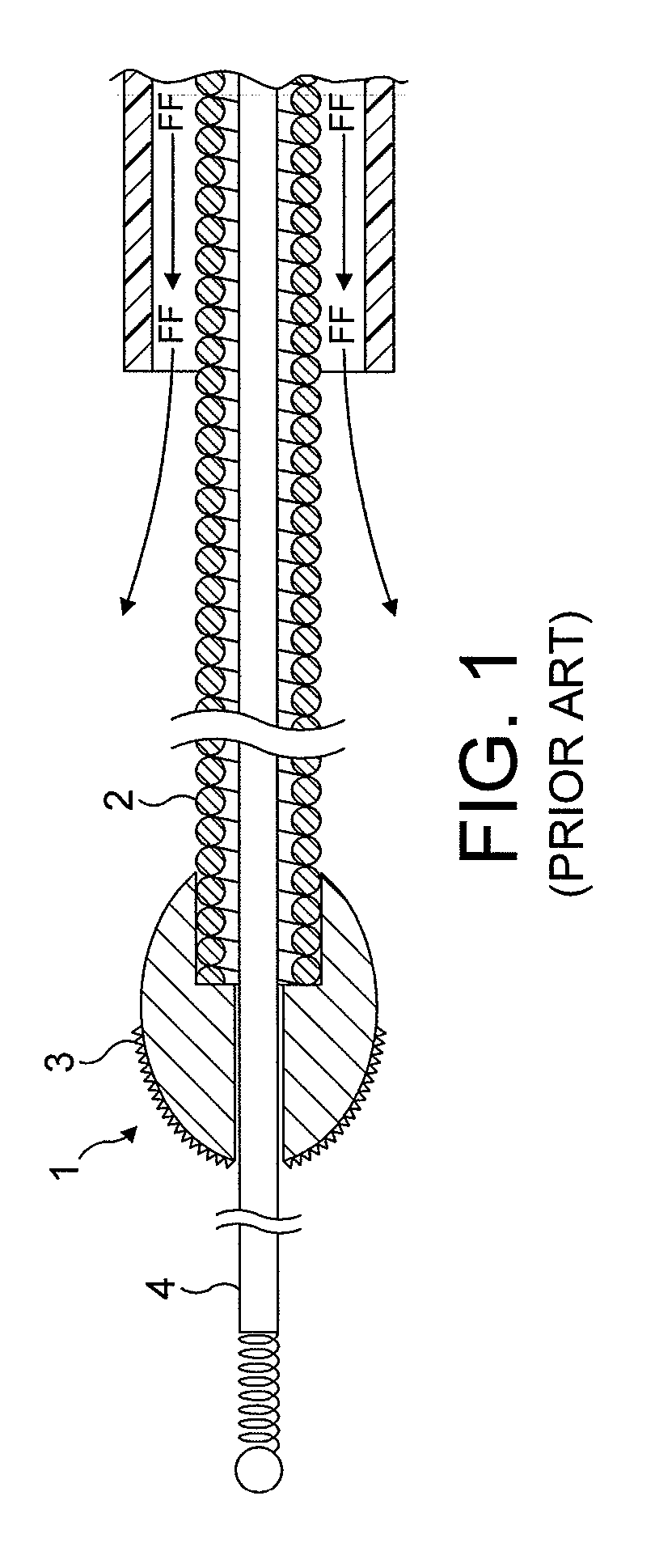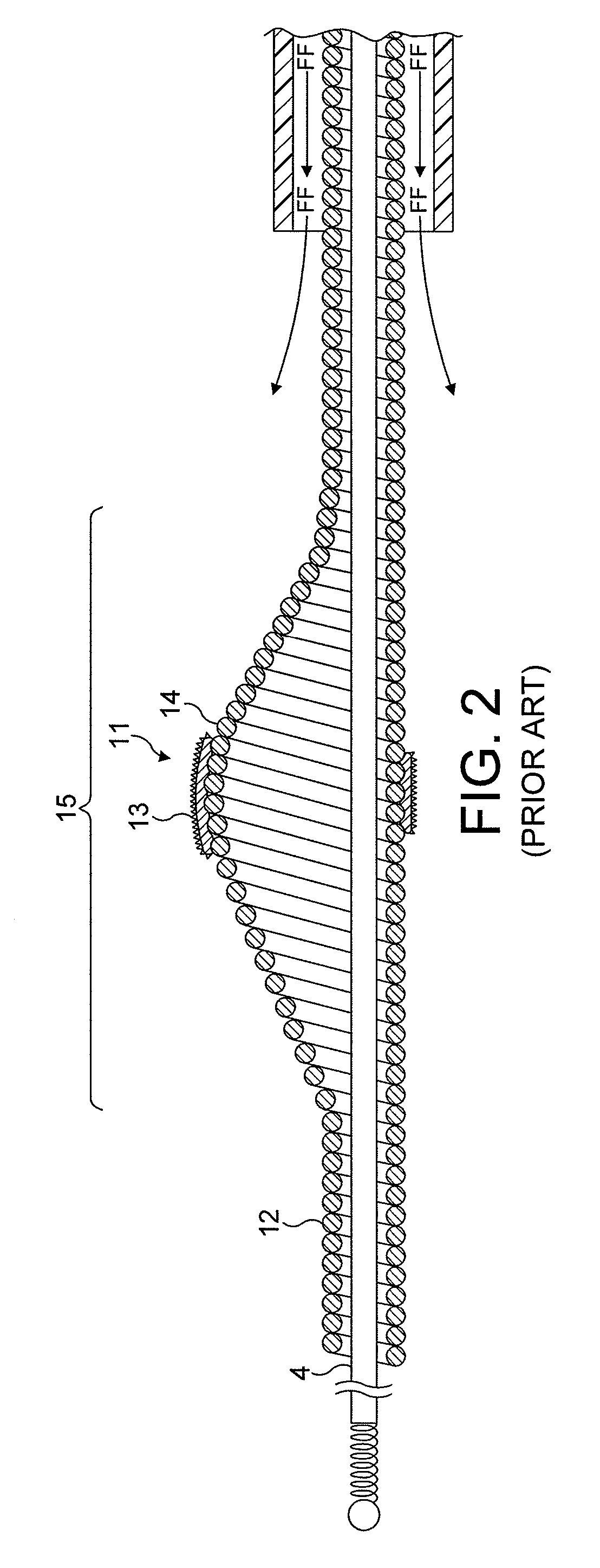Rotational atherectomy system with enhanced distal protection capability and method of use
a technology of atherectomy and distal protection, which is applied in the field of rotational atherectomy system with enhanced distal protection capability, can solve the problems of difficult manufacturing on a commercial scale, complicated construction, and inability to prevent the migration of very small embolic particles
- Summary
- Abstract
- Description
- Claims
- Application Information
AI Technical Summary
Benefits of technology
Problems solved by technology
Method used
Image
Examples
first embodiment
[0083]FIG. 17 illustrates a rotational atherectomy system with enhanced distal embolic protection capability of the present invention, the rotational atherectomy system comprising a rotational atherectomy device with counterweights and a separate drainage catheter, the retrograde flowing fluid being aspirated into the separate drainage catheter, both the rotational atherectomy device 777 and the drainage catheter 800 being shown inserted through separate openings located in the femoral arteries 900 of the patient and meeting in the aorta 966, the drainage catheter 800 extending into the common carotid artery 999 while the rotational atherectomy device 777 passes through the common carotid artery and extends further into the treated internal carotid artery 1500. FIG. 17 illustrates that the openings in the wall of the distal fluid inflatable counterweight of the device are located such that pressurized fluid flowing through the openings forms a fluid bearing between the wall of the f...
second embodiment
[0094]FIG. 23 illustrates the rotational atherectomy system with enhanced distal protection capability. The system of FIG. 23 is similar to the system of FIG. 17 except that the rotational atherectomy device 778 of FIG. 23, instead of counterweights, has support elements having centres of mass lying along the rotational (longitudinal) axis of the drive shaft of the device;
[0095]FIG. 23A is a cross-sectional view of the drainage catheter 800 taken along the line A-A shown in FIG. 23;
[0096]FIG. 24 is an enlarged view of the rotational atherectomy system shown in FIG. 23. FIG. 24 illustrates that the openings in the walls of the distal fluid inflatable support elements of the rotational atherectomy device are located such that pressurized fluid flowing through the openings form fluid bearings between the walls of the fluid inflated support elements and a wall of the treated vessel. FIG. 24 shows that an occlusion balloon 1116 is mounted to a catheter shaft 1115 of the drainage catheter...
fourth embodiment
[0109]FIG. 34 illustrates the rotational atherectomy system with enhanced distal protection capability. The system of FIG. 34 is similar to the system of FIG. 33 except that it includes an external occlusion cuff 4400. FIG. 34 shows that tibial arteries and the most distal segment of the popliteal artery have been occluded by an inflated external occlusion cuff 4400. FIG. 34 illustrates any embolic particles EP abraded by the atherectomy device and not immediately evacuated through the drainage catheter 800 accumulate distal to the site of the treated stenotic area but proximal to a point at which the inflated occlusion cuff has compressed the treated vessel or its distal branches.
[0110]FIG. 35 shows that the occlusion balloon 1116 of the drainage catheter 800 shown in FIG. 34, has been deflated and the drainage catheter 800 has subsequently been advanced sufficiently close to the embolic particles EP accumulated proximal to the segment of the artery occluded by the external occlusi...
PUM
 Login to View More
Login to View More Abstract
Description
Claims
Application Information
 Login to View More
Login to View More - R&D
- Intellectual Property
- Life Sciences
- Materials
- Tech Scout
- Unparalleled Data Quality
- Higher Quality Content
- 60% Fewer Hallucinations
Browse by: Latest US Patents, China's latest patents, Technical Efficacy Thesaurus, Application Domain, Technology Topic, Popular Technical Reports.
© 2025 PatSnap. All rights reserved.Legal|Privacy policy|Modern Slavery Act Transparency Statement|Sitemap|About US| Contact US: help@patsnap.com



